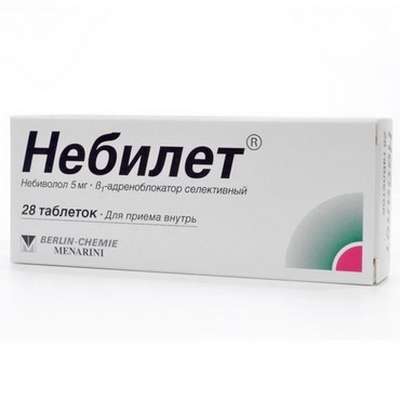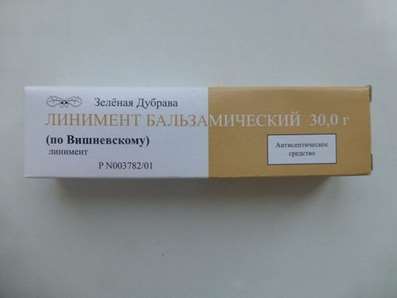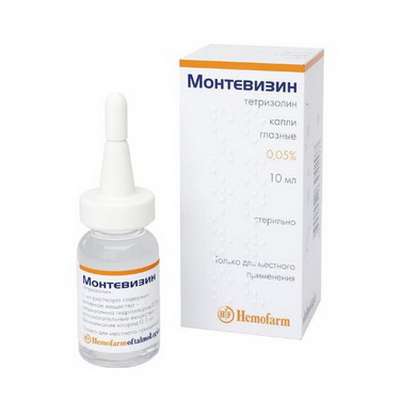Instruction for use: Klaridol
I want this, give me price
Dosage form: Tablets; syrup
Active substance: Loratadinum
ATX
R06AX13 Loratadine
Pharmacological groups:
H1-antihistamines
The nosological classification (ICD-10)
H10.1 Acute atopic conjunctivitis: Allergic conjunctivitis; Allergic eye diseases; Allergic conjunctivitis; Allergic conjunctivitis caused by chemical and physical factors; Allergic rhinoconjunctivitis; Allergic inflammation of the eyes; Spring Qatar; Spring keratitis; Spring conjunctivitis; Conjunctivitis allergic; Year-round allergic conjunctivitis; Exacerbation of pollinosis in the form of rhinoconjunctival syndrome; Acute allergic keratoconjunctivitis; Acute allergic conjunctivitis; Superficial bacterial infection of the eyes; Rhinoconjunctivitis; Seasonal allergic conjunctivitis; Seasonal conjunctivitis; SENSORY; Chronic allergic keratoconjunctivitis; Chronic allergic conjunctivitis
J30 Vasomotor and allergic rhinitis: Allergic rhinopathy; Allergic rhinosinusopathy; Allergic diseases of the upper respiratory tract; Allergic rhinitis; Allergic rhinitis seasonal; Vasomotor runny nose; Prolonged allergic rhinitis; All-year-round allergic rhinitis; All-year allergic rhinitis; Year-round or seasonal allergic rhinitis; All-the-year-round rhinitis of an allergic nature; Rhinitis vasomotor allergic; Exacerbation of pollinosis in the form of rhinoconjunctival syndrome; Acute allergic rhinitis; Edema of the nasal mucosa; Edema of the nasal mucosa; Edema of the mucous membrane of the nasal cavity; Swelling of the nasal mucosa; Swelling of the nasal mucosa; Pollinosis; Permanent allergic rhinitis; Rhinoconjunctivitis; Rhinosinusitis; Rhinosinusopathy; Seasonal allergic rhinitis; Seasonal allergic rhinitis; Hay rhinitis; Chronic allergic rhinitis; Allergic diseases of the respiratory tract
J30.1 Allergic rhinitis caused by pollen of plants: Hay fever; Hay fungus; hay fever; Hypersensitivity to pollen of plants; Polyposis allergic rhinosinusitis; Seasonal pollinosis; Seasonal rhinitis
J31 Chronic rhinitis, nasopharyngitis and pharyngitis: Allergic rhinosinusopathy; Inflammation of the nasal mucosa; Infectious and inflammatory diseases of ENT organs; Catarrh of the nasopharyngeal region; Year-round rhinitis; Ozena; Persecution in the throat or nose; Rhinitis hyperplastic; Rhinitis chronic; Pharyngoesophagitis; Chronic Bacterial Rhinitis
L20 Atopic dermatitis: Allergic diseases of the skin; Allergic skin disease noninfectious etiology; Allergic skin disease etiology nemikrobnoy; Allergic skin diseases; Allergic skin lesions; Allergic reactions on the skin; atopic dermatitis; Allergic dermatosis; Allergic diathesis; Allergic itching dermatosis; Allergic skin disease; Allergic skin irritation; allergic Dermatitis; atopic Dermatitis; allergic dermatoses; exudative diathesis; Itchy atopic eczema Itchy allergic dermatosis; Allergic skin disease; Cutaneous allergic reaction to drugs and chemicals; Cutaneous reactions to medications; Skin and allergic disease; Acute eczema; common neurodermatitis; Chronic atopic dermatitis; Exudative diathesis
L29 Itching: Itching with partial obstruction of the biliary tract; Dermatitis itchy; Dermatosis with persistent itching; Other itching dermatoses; Itching dermatoses; Itching allergic dermatosis; Itching dermatitis; Itching dermatosis; Itching itch; Excruciating itching; Severe itching; Endogenous itching; Skin itching with dermatosis; Restricted itchy dermatitis; Itching of the skin; Itchy scalp; Itching eczema
L50 Urticaria: Idiopathic chronic urticarial; Injury Urticaria; Chronic urticarial; Hives of the newborn
T78.3 Angioedema: Edema Quincke; Laryngeal exacerbation with angioneurotic edema; Recurrent angioedema; Allergic edema; Recurrent swelling of Quincy
T78.4 Unspecified Allergy: Allergic reactions to insulin; Allergic reactions to insect stings; Allergic reactions similar to systemic lupus erythematosus; Allergic diseases; Allergic diseases of mucous membranes; Allergic diseases and conditions resulting from increased release of histamine; Allergic diseases of mucous membranes; Allergic symptoms; Allergic symptoms in the mucous membranes; Allergic reactions; Allergic reactions caused by insect bites; Allergic reactions; Allergic conditions; Allergic laryngeal edema; allergopathy; allergic conditions; Allergy; House dust allergy; Anaphylaxis; Cutaneous reactions to medications; Skin reaction to insect stings; Cosmetic allergy; Drug allergy; Acute allergic reaction; Laryngeal edema allergic genesis and background radiation; Food and drug allergy
W57 Bite or sting with a non-toxic insect and other non-venous arthropods: An allergic reaction to insect bites; Skin reaction after insect bite; Reactions to insect bites; Mosquito bite; Bite of bloodsucking insects; A bite of an insect; The bite of the wasp
Composition
Tablets - 1 table.
active substance: Loratadine 10 mg
Auxiliary substances: MCC - 56 mg; Starch - 25 mg; Sodium methyl paraben 0.2 mg; Colloidal silicon dioxide anhydrous 0.2 mg; Magnesium stearate - 0.8 mg; Sodium starch glycolate - 2 mg; Talc purified - 0.8 mg; Purified water - how much will it take
Syrup 1 ml
active substance:Loratadine 1 mg
Auxiliary substances: sodium methylparaben; Sodium propylparaben; Sucrose; Propylene glycol; Citric acid; A sorbitol solution; Saccharin sodium; Sodium benzoate; Disodium edetate; Dye "Sunset Sunset"; Mixed fruit flavor; American ice cream; purified water
Description of dosage form
Tablets. From white to almost white, round, flat with bevelled edges and a fault line on one side.
Syrup. Transparent liquid of orange color with a sweet taste and pleasant aroma.
Pharmachologic effect
Mode of action - antihistamine.
Pharmacodynamics
Loratadin is a blocker of H1-histamine receptors (long-acting). Inhibits the release of histamine and leukotriene C4 from mast cells. Prevents development and facilitates the course of allergic reactions. It has anti-allergic, antipruritic, anti-exsudative action. Reduces the permeability of capillaries, prevents the development of edema of tissues, relieves spasms of smooth muscles. The antiallergic effect develops after 30 minutes, reaches a maximum after 8-12 hours and lasts for 24 hours. It does not affect the central nervous system and does not cause addiction (because practically does not penetrate the BBB).
Pharmacokinetics
Quickly and completely absorbed into the digestive tract. Tmax - 1,3-2,5 h; Food intake increases it by 1 h. Cmax in elderly people increases by 50%, with alcoholic liver damage - with increasing severity of the disease. The connection with plasma proteins is 97%. It is metabolized in the liver with the formation of an active metabolite of descobacterotoxyloratadine with the participation of cytochrome P450 isoenzymes CYP3A4 and, to a lesser extent, CYP2D6.
Css of loratadine and metabolite in plasma are reached on the 5th day of administration. Does not penetrate the BBB.
T1 / 2 loratadine - 3-20 h (average - 8.4 h), active metabolite - 8.8-92 h (average - 28 h); In elderly patients, respectively - 6,7-37 hours (an average of 18.2 hours) and 11-38 hours (an average of 17.5 hours).
With alcoholic liver damage, T1 / 2 increases with increasing severity of the disease. It is excreted by the kidneys and with bile. In patients with chronic renal failure and hemodialysis, the pharmacokinetics practically does not change.
Indication of the Klaridol
In adults and children older than 2 years for the treatment of the following diseases and conditions:
Seasonal and year-round allergic rhinitis;
conjunctivitis;
Pollinosis;
Urticaria (including chronic idiopathic);
Angioedema;
Allergic itching dermatoses;
Pseudoallergic reactions;
Allergic reactions to insect bites;
Itching of different etiologies.
Contraindications
Hypersensitivity;
pregnancy;
Lactation period;
Children under 2 years.
With caution: hepatic insufficiency.
Application in pregnancy and lactation
You should refrain from using Klaridol during pregnancy and lactation.
Side effects
The adverse events listed below with loratadine occurred at a frequency of ≥2% and approximately at the same frequency as with placebo.
In adults: headache, fatigue, dry mouth, drowsiness, gastrointestinal disorders (nausea, gastritis), as well as allergic reactions in the form of rashes. In addition, there were rare reports of anaphylaxis, alopecia, impaired liver function, palpitation, tachycardia.
In children: rarely - headache, nervousness, sedation.
Interaction
Ethanol reduces the effectiveness of loratadine.
Erythromycin, cimetidine, ketoconazole when combined with loratadine increase the concentration of loratadine in the blood plasma, without causing clinical manifestations and without affecting the ECG.
Inductors of microsomal oxidation (phenytoin, barbiturates, zixorin, rifampicin, phenylbutazone, tricyclic antidepressants) decrease the effectiveness of loratadine.
Dosing and Administration
Inside.
Adults and children over 12 years: 10 mg Klaridol (1 table or 2 ts.lokki) 1 time per day. The daily dose is 10 mg.
Children from 2 to 12 years (with a body weight of less than 30 kg) - 5 mg Klaridol (1/2 table or 1 tsp) once a day. The daily dose is 5 mg.
Children with a body weight of more than 30 kg - 10 mg Klaridol (1 table or 2 ts.lokki) 1 time per day. The daily dose is 10 mg.
Patients with impaired hepatic function Klaridol should be administered at an initial dose of 5 mg per day due to a possible disruption in the clearance of loratadine.
Overdose
Symptoms: drowsiness, tachycardia, headache. In case of overdose, see a doctor.
Treatment: induction of vomiting, gastric lavage, the appointment of activated charcoal.
Special instructions
Impact on the ability to drive vehicles and engage in potentially hazardous activities. During the treatment period, it is necessary to refrain from engaging in potentially dangerous activities that require an increased concentration of attention and speed of psychomotor reactions.
Release form
Tablets, 10 mg. By 7, 8, 10, 16 table. In the blister; 1, 2, 3, 4, 5, 10 blisters in a cardboard box or 10 tab. In a strip, 1, 2, 3, 4, 5, 10 strips in a cardboard box.
Syrup, 1 mg / 1 ml. In glass bottles of amber color for 50, 60, 100 and 120 ml.
Manufacturer
Shraya Life Senses Pvt. Ltd., India.
Shreya House, 301 / A, Pereira Hill Road, Andery (East), Mumbai - 400 099, India.
Conditions of leave from pharmacies
Without recipe.
Storage conditions of the drug Klaridol
In a dry place, at a temperature of no higher than 30 ° C.
Keep out of the reach of children.
Shelf life of the drug Klaridol
3 years.
Do not use after the expiry date printed on the package.

 Cart
Cart





